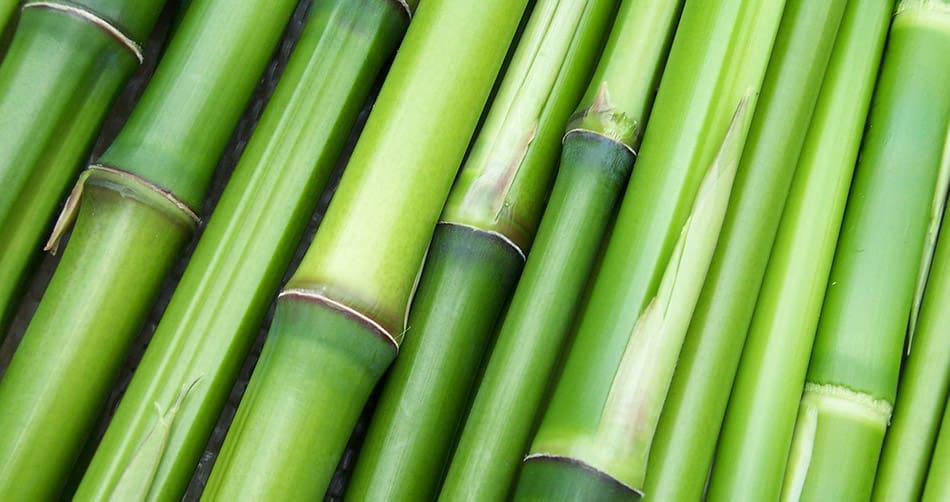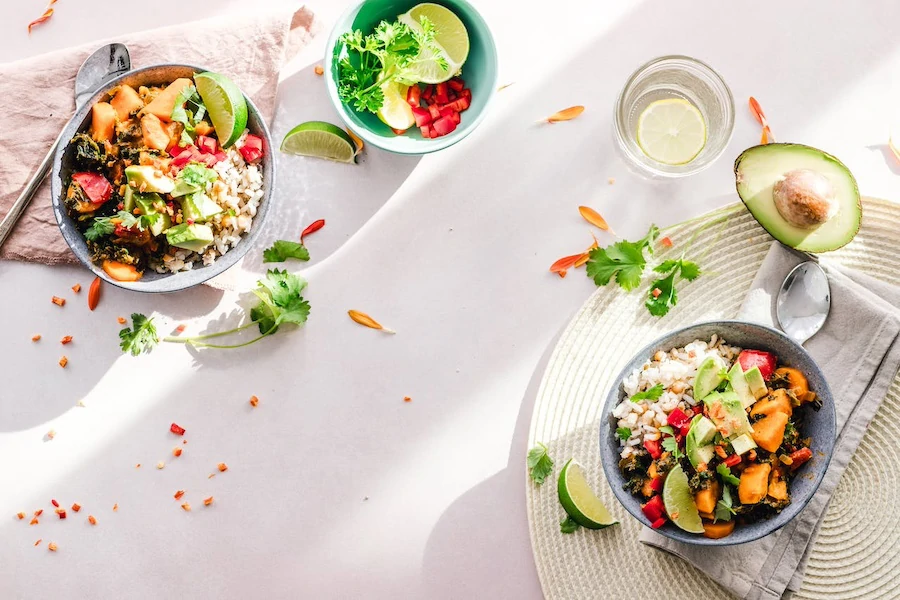
Bamboo products have increased in popularity with many brands promoting their eco-friendly benefits and sustainability. In an effort to promote an eco-friendly home, I discovered the exact details behind this sustainable material.
So why is bamboo a sustainable material? Bamboo is a fast-growing, renewable, and easy-to-grow material that requires zero chemicals and pesticides. It can be grown all throughout the world and has countless uses both in and outside the home.
The more I learn about what seems to be a “miracle plant”, the more I advocate for its use as a renewable resource and sustainable material. We are reminded daily about our planet suffering from depletion of natural resources, deforestation, and harmful amounts of waste dumped into the environment, but bamboo provides us with an alternative solution towards saving our planet.
Benefits of Bamboo as a Sustainable Material
As a result of a movement towards sustainability, bamboo has become increasingly popular in recent years. I did some research and created a list of the benefits of bamboo as a sustainable material:
- Renewable resource – bamboo can be harvested in one to five years depending on the species. In comparison, hardwoods like oak trees take at least forty years before they can be harvested. According to World Wildlife Fund, 18.7 million acres of forests are lost to deforestation annually. As a substitute for hardwoods, bamboo offers a versatile solution to drastically reduce this number and protect our forests.
- Fast growth rate – some species of bamboo will grow as much as three feet (1 meter) per day! Labeled the fastest growing plant on earth, bamboo does not require replanting. When harvested, it will grow a new shoot as a result of its extensive root system and help protect soil from erosion.
- No chemical pesticides or fertilizers – bamboo requires no agricultural chemicals to grow. In comparison, cotton is sprayed with pesticides more than any other crop which depletes nutrients in the soil and puts harmful chemicals into your cotton fabric.
- Absorbs greenhouse gases – bamboo sequesters carbon dioxide from the environment and produces 35% more oxygen than its equivalent size of trees. Large-scale bamboo plantations can become effective “carbon sinks” or areas designed to reduce CO2 from the atmosphere. When bamboo fibers are used to construct buildings, the carbon is sequestered (stored away) for the lifetime of that building.
- Grows everywhere – bamboo is a tough and durable plant that can be grown throughout the world and thrives even in harsh conditions from low wetlands to higher elevations in the mountains. With over 1000 species, bamboo can be found in nearly every region in the world.
- Economic development – bamboo production and manufacturing provides job opportunities in less developed countries that need social and economic sustainability. China, the world’s largest bamboo producer, was valued at over 19.5 billion USD in 2012 employing over 7.5 million people. This serves as a model for other countries looking to develop a sustainable bamboo industry.
The Many Uses of Bamboo
Bamboo is versatile with many applications that can replace the use of hardwoods. I was pleasantly surprised to learn how many uses there are for this miracle plant.
- Material for homes, schools, and buildings – today over one billion people in the world live in bamboo houses. According to UNESCO, 70 hectares of bamboo produce enough of the material to build 1000 bamboo houses.
- Roads and bridges – bamboo has been used for road barriers in India. A bamboo bridge built in China can support a truck weighing 16 tons (32,000 lbs or 14,515 kg)!
- Medicines – In China, ingredients from the black bamboo shoot help treat kidney diseases. Bamboo leaves and roots have been used to treat venereal diseases.
- Clothes – a textile option that is breathable, sweat-absorbent, and moisture-wicking which will keep you dry better than its polyester performance fabric counterparts.
- Furniture – beautifully handcrafted beds, chairs, and tables can be made from bamboo.
- Food – bamboo shoots are mainly used in Asian cuisine. The antioxidant properties of bamboo skin prevent bacterial growth and serve as natural food preservatives. Bamboo shoots and leaves are also the staple diet of pandas and elephants.
- Fuel – the whole bamboo plant, including the stem, branch and its rhizome (similar to a root), can be used to produce charcoal, making it highly resource-efficient, with limited waste.
- Scaffolding – in Hong Kong, bamboo scaffolding is preferred over metal scaffolding because of its cost-effectiveness and easy availability.
- Paper products – bamboo combines with sugarcane fiber to produce a soft yet durable, recyclable, and biodegradable paper product.
- Utensils and tableware – durable cups, straws, bowls, spoons, and forks can all be made from bamboo.
- Accessories – bamboo is used to make bracelets, earrings, necklaces and other types of jewelry
- Diapers – diapers made from bamboo cloth can retain its antibacterial quality even after being washed 50 times.
Textile Production of Bamboo
One of the more popular applications for bamboo is its use as a textile. Used in the production of clothing, fabrics, and linens, bamboo is centered amid some debate regarding its production being truly sustainable and eco- friendly.
There are two ways to process bamboo into a textile: mechanically or chemically.
The mechanical process includes crushing the woody part of the plant and then applying natural enzymes to break the bamboo cell walls, creating a mushy mass. These natural fibers can then be mechanically combed out and spun into yarn. The fabric that results has a similar feel to linen. Very little bamboo material is produced this way since its labor-intensive and expensive.
Most bamboo fabric is created through an intense chemical process in which the bamboo leaves and shoots are cooked in strong chemical solvents such as sodium hydroxide and spun directly into a chemical bath of sulfuric acid where it hardens into fine strands. These strands form rayon yarn which can be dyed and woven into a soft and silky fabric known as “rayon from bamboo.”
If not correctly managed, these chemicals can pose a risk to workers’ health and poor management of chemical waste can cause serious damage to the surrounding environment. This hardly seems an eco-friendly and sustainable material produced through this process.
Many companies market bamboo textiles as super eco-friendly, however, guidelines have recently changed that require bamboo textiles which are produced by a chemical process to be labeled. Look for “rayon from bamboo” on labels if you wish to avoid bamboo textiles produced in this process.
If you are looking for a more eco-friendly and sustainable bamboo textile option, the good news is that some facilities have started using less harmful processes to chemically manufacture bamboo fibers. Called “lyocell” this type of bamboo textile is produced using less toxic chemicals and the bamboo is processed in a closed-loop system where nearly 100% of the chemicals are captured and recycled to be used again.
Bamboo-derived textiles may not be the best option if you wish to have a fully sustainable and eco-friendly material, however, you should not write them off completely as no fabric is perfect. Polyesters and acrylics are fossil fuel-based and require plenty of water, chemicals, and energy to produce. Cotton is available in both conventional and organic versions, but both are water and chemically intensive crops.
When looking for bamboo textiles I advise you do your homework on the brand and the manufacturer’s process of production if you wish to have truly sustainable and eco-friendly material.
Related Questions
Is bamboo flooring sustainable? Since bamboo is naturally anti-bacterial it will be more resistant to infestation, rotting, and warping than hardwood. Bamboo is also more water-resistant, which makes it a better choice than many other hardwood floors that can stain or deteriorate when any kind of moisture gets in contact with it.
Is bamboo sustainable building material? Bamboo can be utilized as a building material for scaffolding, bridges, buildings, and houses. Bamboo, like hardwood, is a natural composite material with a high strength-to-weight ratio useful for structures.
What are some other sustainable materials? Bamboo is not alone. Other sustainable materials include recycled rubber, adobe, hemp, cork, straw, clay, and coconut palm.




